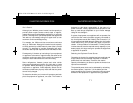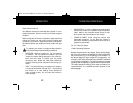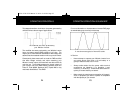
OPERATING PRINCIPALS/SUMMARY
For more information on inverters see our Inverter FAQ page
at www. w h i s t l e rg ro u p . c o m / f a q - i n v e rt e r s . a s p
A true sine wave typical of home AC outlet.
In Review.
• Never attempt to operate your Whistler inverter from
any power source other than a 12 volt battery or a
group of batteries that total 12 volts.
• Always make certain that the power cable terminal
connections run Negative (-) to Negative (-) and
Positive (+) to Positive (+). Check these connections fre-
quently to ensure that they are secure .
• Make certain the rated power consumption of the appli-
ance or equipment you wish to operate is compatible
with the capacity of your invert e r.
25
OPERATING PRINCIPALS
This stepped waveform is similar to the power generated by
utilities and has a broad range of applications.
The modified sine wave produced by
your Whistler Inverter
The modified sine wave produced by your Whistler invert e r
has a root mean square (RMS) voltage of 110 volts. The
majority of AC voltmeters are calibrated for RMS voltage and
assume that the measured waveform will be a pure sine wave.
C o n s e q u e n t l y, these meters will not read the RMS modified
sine wave voltage correctly and, when measuring your
Whistler i n v e rter output, the meters will read about 20 to 30
volts too low. To accurately measure the output voltage of
your invert e r, use a true RMS reading voltmeter such as a
Fluke 87, Fluke 8060A, Beckman 4410, Triplett 4200 or any
multimeter identified as "True RMS."
24
1250/1750/2750 Manual 3/6/02 2:45 PM Page 27


















